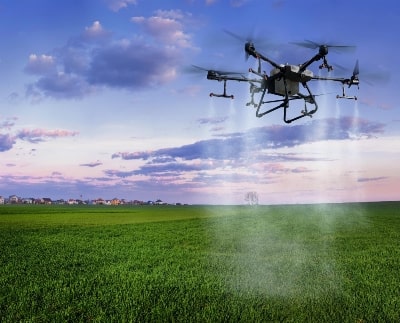Taking to the Skies: Weighing the Pros and Cons of Using Drones for Crop Management

Drones, also known as unmanned aerial vehicles (UAVs), are increasingly being used in agriculture for crop management. With their ability to cover large areas in a short amount of time, they have the potential to revolutionize the way farmers manage their crops. However, like any new technology, there are both benefits and drawbacks to using drones for crop management. In this article, we will explore both the advantages and disadvantages of using drones for crop management.
Benefits of Using Drones for Crop Management
- Increased Efficiency
Drones can cover large areas of land in a relatively short amount of time, making them a very efficient way to manage crops. This is particularly useful for farmers who have large farms and need to cover a lot of ground quickly. Drones can also be programmed to fly a specific pattern over the fields, which means that they can cover the entire area without missing anything.
- Improved Crop Health
Drones can be used to collect data about crop health, which can then be used to make informed decisions about how to manage the crops. For example, drones can be equipped with cameras and sensors that can detect things like plant stress, nutrient deficiencies, and water stress. This information can then be used to adjust irrigation, fertilizer application, and other management practices to improve crop health and yield.
- Reduced Labor Costs
Using drones for crop management can also help reduce labor costs. With drones, farmers can cover large areas of land without having to physically walk through the fields. This means that they can spend less time and money on labor and focus more on other important tasks, such as data analysis and decision-making.
- Better Access to Data
Drones can provide farmers with a wealth of data that they can use to make more informed decisions about crop management. For example, drones can be used to create maps of the fields, which can then be used to identify areas that require more attention. Drones can also be used to collect data about weather conditions, soil moisture levels, and other factors that can affect crop health and yield.
- Environmentally Friendly
Using drones for crop management can also be environmentally friendly. By using drones, farmers can reduce their use of pesticides and fertilizers, which can have a negative impact on the environment. Drones can also be used to monitor soil moisture levels, which can help reduce water usage and prevent soil erosion.
Drawbacks of Using Drones for Crop Management
- High Cost
One of the biggest drawbacks of using drones for crop management is the cost. Drones can be expensive to purchase and maintain, which can be a barrier for many farmers. In addition, drones require specialized training and expertise to operate, which can also be costly.
- Limited Payload Capacity
Drones have a limited payload capacity, which means that they can only carry a limited amount of equipment and sensors. This can be a limitation for farmers who need to collect a lot of data about their crops.
- Dependence on Weather Conditions
Drones are dependent on weather conditions, which can be a limitation for farmers. If weather conditions are poor, such as strong winds or heavy rain, it may not be safe or practical to fly drones. This can result in delays in crop management and data collection.
- Limited Flight Time
Drones have a limited flight time, which means that they can only cover a certain amount of ground before needing to be recharged. This can be a limitation for farmers who need to cover large areas of land.
- Regulatory Restrictions
There are also regulatory restrictions on the use of drones for crop management. For example, in the United States, the Federal Aviation Administration (FAA) regulates the use of drones for commercial purposes. This means that farmers may need to obtain a license or permit to use drones for crop management.
While there are certainly benefits to using drones for crop management, there are also several drawbacks that must be considered. In many cases, the benefits may outweigh the drawbacks, but each farmer must evaluate their own situation to determine whether or not using drones is a viable option.
In addition to the benefits and drawbacks outlined above, there are also several other factors that must be considered when deciding whether or not to use drones for crop management. These include the type of crops being grown, the size of the farm, and the specific management needs of the crops. Despite the potential drawbacks, it is clear that the use of drones for crop management is becoming increasingly popular. As technology continues to improve and costs continue to decrease, it is likely that we will see more and more farmers using drones to manage their crops.